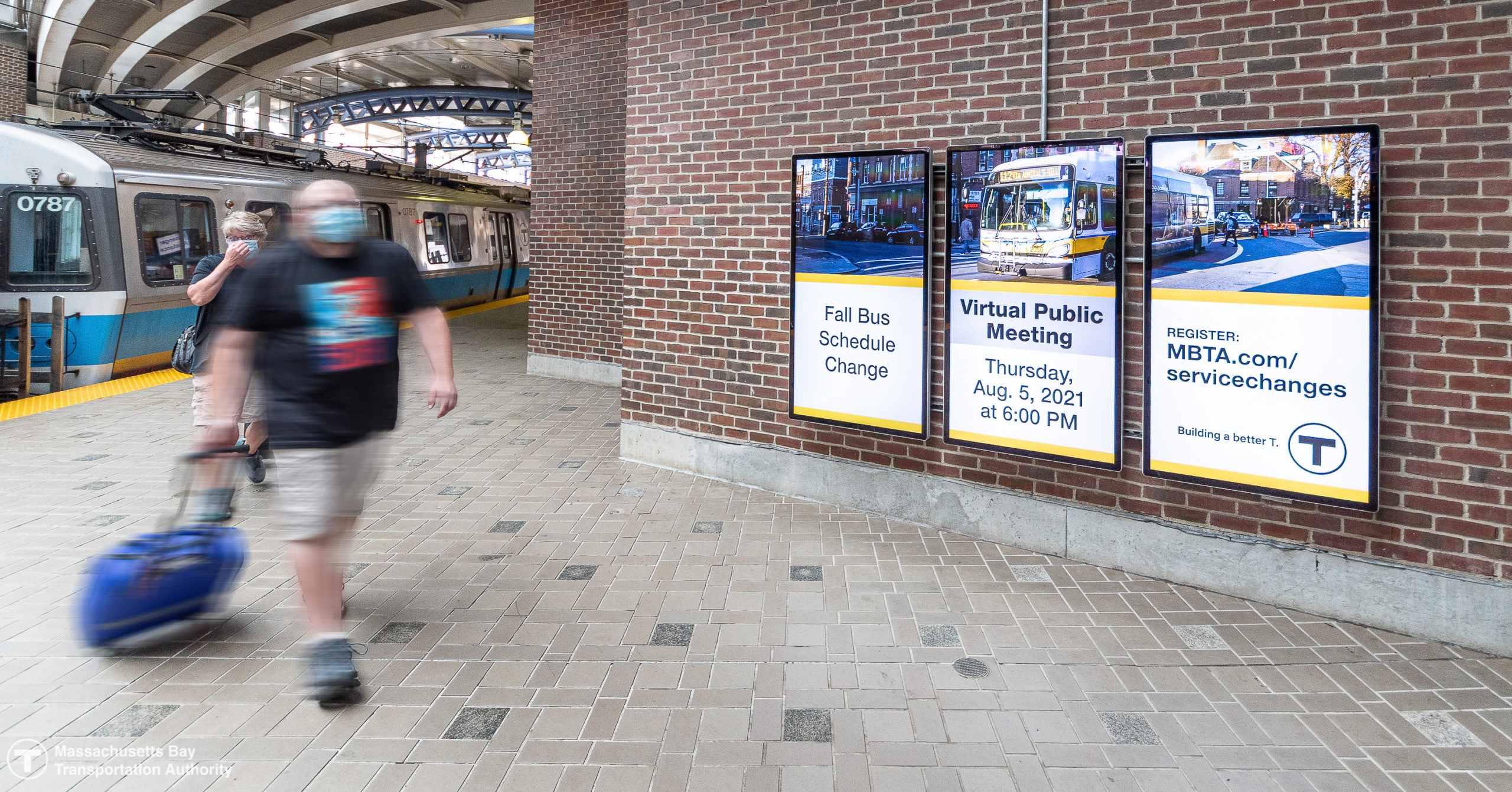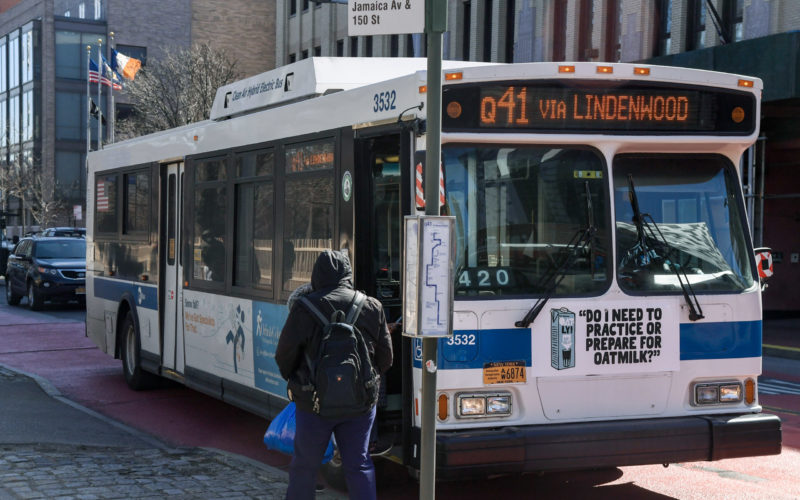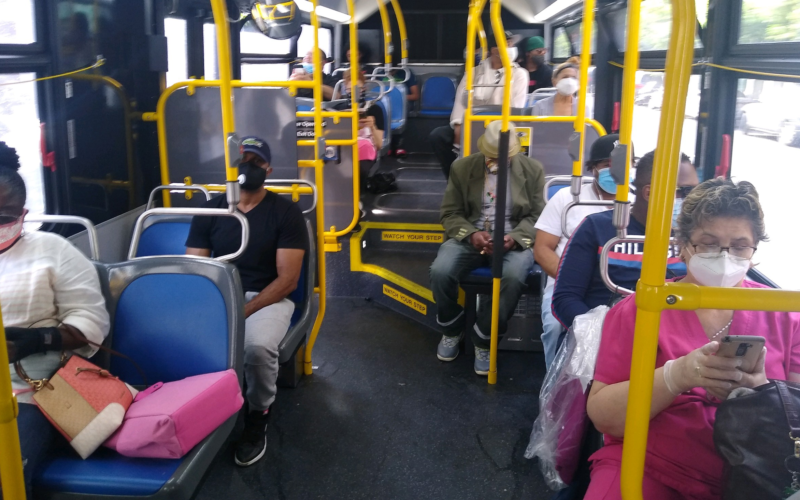
TransitCenter is pleased to publish this guest post from Laurel Paget-Seekins. Laurel is a Leadership in Government Fellow with Open Society, working on transit equity in the recovery from COVID. Previously she was Assistant General Manager for Policy at the MBTA in Boston.
Ask any service planner at a US transit agency, and they will tell you that service changes are difficult. The difficulty generally comes from the fact that service changes, especially when there is no additional transit funding, move resources around and create a sense of winners and losers.
Despite the challenges, transit service needs to change in response to the COVID pandemic and to address underlying inequities.
Existing transit service isn’t necessarily equitable, and it may not do a good job linking where people are to where they need to go. In general the status quo favors people and communities with access to political power. Proposed changes can be stopped because it is harder to organize people in favor of a service that doesn’t exist than to organize people to oppose a change. This is especially true when there is a lack of trust between the public and the transit agency, distrust often created by previous service change processes.
These challenges explain why, until recently, many transit agencies had not modified their networks significantly for so long, even as the land use and travel needs in their region changed. Before COVID struck, this inertia was starting to give way, as agencies launched bus network redesigns to catch up on years of delayed service changes.
COVID made it even more imperative to reassess service provision, as the pandemic altered travel patterns and revealed where and when service is most needed. Agencies scrambled to adjust service at an unprecedented pace, with limited to no public input. Some of these changes remain in place and others have been reversed as agencies work to restore full service.
Even as the pandemic (hopefully) recedes, the changes in travel needs will last for years as new patterns of remote work, deliveries, and land use take shape. In response, transit service will need to change more often than it did before COVID, either as an adaptation to travel changes or as proactive policy to reduce emissions and improve equity. This means transit agencies will need regular adjustments to how service is allocated.
For service changes to become a regular practice, we need to find ways for agencies and communities to work through them collaboratively. How should transit agencies, riders, and community organizations prepare so that the process will be equitable and create the best possible outcomes? I have a few suggestions.
Transit advocates and agencies need to address the operating funding issue head-on and proactively. Working together at the national level, agencies and advocates were able to win emergency federal funding to keep transit operating. We can’t wait for the current emergency federal funding to run out before implementing long-term solutions for operating funds. Each transit agency has its own operating funding mix and governance structure that will affect the local strategy. This also means that the crisis and possible need for service cuts will hit regions at different times, making it harder to get a federal solution.
Agencies need to work with community organizations, elected officials, and their governance boards to commit to a process of regular service changes for the next few years — even if there isn’t a funding crisis. The process doesn’t need to be static, it can also change if needs change or if there are lessons learned, but it needs to be transparent. Part of the collaboration on the process should be deciding how trade-offs are going to be determined. Trade-off conversations can be difficult, but without community participation agencies will make the decisions on their own.
This conversation needs to start with an acknowledgment that service before COVID wasn’t necessarily equitable, and a commitment to a more equitable distribution of service. Communities and agencies should determine how to assess service equity and develop a shared understanding of what makes service “more equitable.” There is a lot of existing work on metrics; TransitCenter’s Equity Dashboard is a good example.
Agencies and community organizations also need to collaborate on the data that will inform decisions. In general there are three types of trips that should be considered in service planning – trips currently made on transit, trips currently made using other modes, and trips not being made at all. (Ideally service changes should retain the first and increase the latter two.) Agencies have the best data on the first, are increasingly using new cell phone data sources for the second, and have the least amount of data for the third. Given that COVID has changed people’s travel needs (and that some transit service was suspended), relying solely on observed trips on transit and other modes is very limiting. Agencies will need significant community participation to collect useful data about people’s travel needs over the next few years.
What else should transit agencies and communities figure out before the next funding crisis or service change? Let’s hash it out now so we get better outcomes. It will be a huge disservice to riders for transit service to get stuck due to the perceived political difficulty of service changes — or for the service conversation to be driven only by fiscal emergencies and not community transportation needs.
I hope that riders, advocates, and agency staffers can build and retain their empathy for each other as a result of COVID. The pandemic was traumatic for transit agency employees and riders. Let’s take a moment to acknowledge what we have been through and our shared vision for the future. Hopefully this empathy can serve as the foundation for the relationship needed to achieve that vision.
 How Much Service did the Largest Transit Agencies Run in 2021?
How Much Service did the Largest Transit Agencies Run in 2021?
In this post, we’re drilling down into 2021 service levels across mode in the seven highest ridership cities to see the choices agencies are making about how to allocate service, as well as to gauge the impact operator shortages are having.
Read More Testimony to New York State Senate on Finances and Operations of the MTA
Testimony to New York State Senate on Finances and Operations of the MTA
The ground has shifted, and the transit system must adapt and change in response -- or else the future for subway and bus riders looks bleak, as do the prospects for the entire New York City region.
Read More